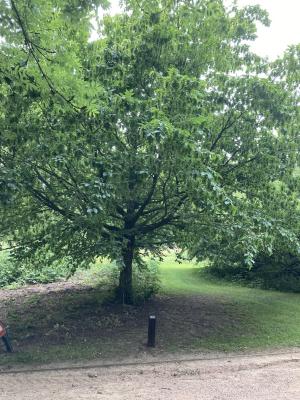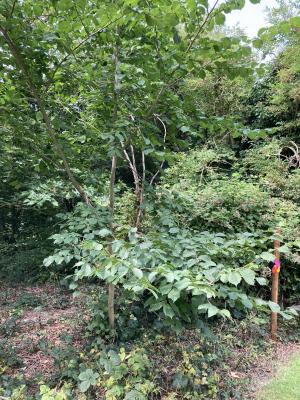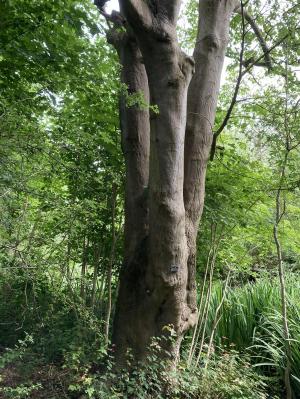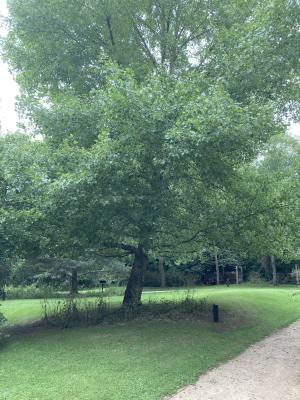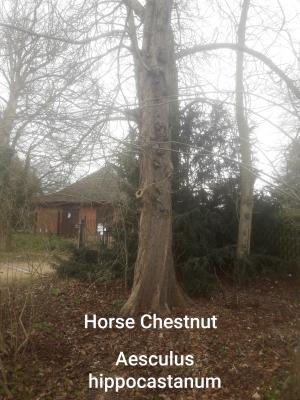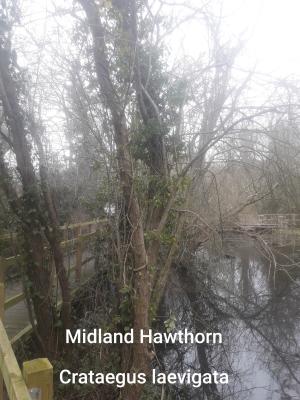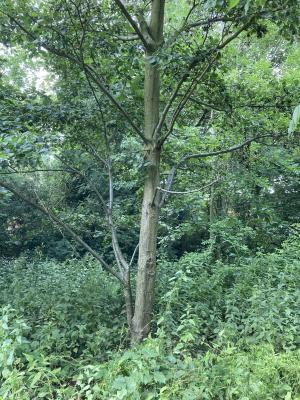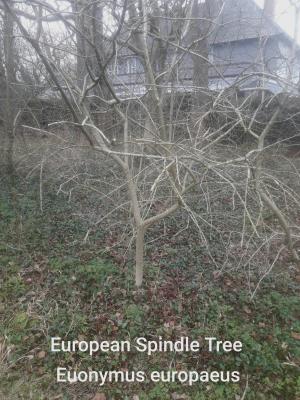Our Tree Collection
The smooth light grey bark of the hornbeam is similar to that of the beech. However the trunk is fluted. Hornbeam also has a unique feature - hanging clusters of triangular, ribbed nutlets surrounded by long, three-lobbed bracts.
The leaf-buds are shorter and broader than those of the beech, and the leaves are double-toothed. Male flowers form in drooping catkins, female in leafy buds. The leaves are pointed with toothed edges and distinctive parallel veins. The leaf-stalks are reddish in colour.
This is the most common elm found in Scotland, Wales and northern England and has proved more resistant to Dutch elm disease than most elms. Unlike most elms wych elm reproduces itself by seed, rather than by suckers from the roots of the parent tree. It's canopy spreads more broadly than that of the English elm, although the tree is not so tall.
Small flowers with long purple-tipped stamens appear in conspicuous clusters in February and March. The oval leaves are up to 6 inches long and roughly hairy. The buds and twigs are both a chestnut-brown and hairy. The fruits are winged.
Britain's only native maple is a small round-headed tree often found growing in hedgerows and thus trimmed back to form part of the hedge itself. As such it makes a very good hedging plant. It's a compact, rounded tree with attractive 5-lobed leaves that turn a rich golden yellow in autumn. It produces the hardest, highest density timber of all European maples.In woodlands on chalky soils in the south-east of the country it may grow taller, but seldom as high as the other maples.
The tree can be easily recognised by the rounded lobes of it's leaves. It has has corky twigs and a ribbed grey or light brown bark with fine shallow fissures. Small flowers appear in the upright spikes in May or June. The fruits form in pairs, with the wings set straighter than in other maples.
The Cappadocian Maple is a medium-sized deciduous tree growing to 20 - 30 m tall with a broad, rounded crown.
The leaves are opposite, palmately lobed with 5 - 7 lobes, 6 - 15 cm across. The leaf stems bleed a milky latex when broken. The flowers are yellow-green with five petals 3 - 4 mm long; flowering occurs in early spring.
The fruit is a double samara with two winged seeds, the seeds are disc-shaped, strongly flattened, 6 - 11 mm across and 2 - 3 mm thick. The wings are 2.5 - 3 cm long, widely spread, approaching a 180 degree angle. The bark is greenish-grey, smooth in young trees, becoming shallowly grooved when mature.
The massive domed outline of the sycamore, tallest and commonest member of the maple family, has become a familiar sight in Britain's gardens and woods since it was introduced from France in the Middle Ages. The sycamore has proved hardy even in the bleakest of conditions, and spreads vigorously, even on waste ground, by means of it's winged fruits. These twirl through the October air like tiny helicopter blades.
The leaves, often spotted with disease, are set in opposite pairs and the branches are spread out evenly. The flowers appear in May and June. The leaves are large and leathery. The teeth are regular and the foliage is dark green in colour.
The distinctive candles of white flowers first appear in May and are then followed by the familiar spiky fruits in Autumn. These 'conkers' have been treasured by children for generations. Large sticky terminal winter buds and the horshoe-like leaf scars are further distinctive features of this tree. The leaf itself is compound and it made up of five to seven large leaflets.
Unlike the common hawthorn, the Midland species - also called English hawthorn - is usually found as a woodland tree rather than being in hedge form. White flowers open in May, and later there are fruits which are more round and redder than those of the common hawthorn.
Midland hawthorn is probably better known for it's cultivated garden variants, many of which are hybrids with the common hawthorn. Their flowers may be single or double, and coloured white, pink or red.
The leaves are alternate with the lobes being shallower and more rounded than those on the common hawthorn. The fruit contains two or three seeds, as opposed to the single-seeded common hawthorn fruit.
The common alder is one of the few trees whose leaves remain green well into the autumn. But it is the catkins that appear that give the tree it's unmistakable main characteristic. After the fruits of the female catkins have ripened in October they stay on the tree all winter as small brown woody cones, until the seeds are all dispersed in the spring.
The leaves of the common alder are roundish oval in shape and shiny. The tips of the leaves are often notched, as though a small bite had been taken out of the leaf. It's cousin the Grey Alder (Alnus incana) can be distinguished by a grey underside to the leaf. The leaves are also pointed and toothed.
Alders often grow near rivers as they prefer wet environments. The alder's suckers make it useful at binding river banks and the tree can grow up to 80ft in height.
For centuries the fast-growing and sturdy hawthorn has traditionally divided fields across mile upon mile of the British countryside. It will grow almost anywhere, and a well made and healthy hedge is virtually impenetrable.
The white flowers, with their sickly sweet scent, are borne in May - which gives the hawthorn it's other familiar name - Maythorn. The flowers grow in clusters on hawthorn trees, but seldom appear on the close-clipped hedgerows.
The greyish-brown bark has many small scales. The leaves are alternate with five to seven lobes. The haws (fruit) ripen to a dark red in September and each contains a single seed. There is a variety called 'biflora' which can flower in the winter during mild years.
Inconspicuous for most of the year, the spindle asserts itself in autumn with a fine show of dark red leaves and pinkish-red fruits. Simply on the strength of this display it is often cultivated in parks and gardens.
The colour of the fruit attracts birds, which help to spread the seed. The wood of the tree was used in centuries past to make the wooden spindles used in the wool spinning industry, hence the name.
The greenish-yellow flowers open in May. The leaves are opposing and thin and pointed, with small teeth. The leaves turn red and the fruit 'capsules' pinkish-red in the autumn. The fruit 'capsules' have a matt texture and 4 lobes.
